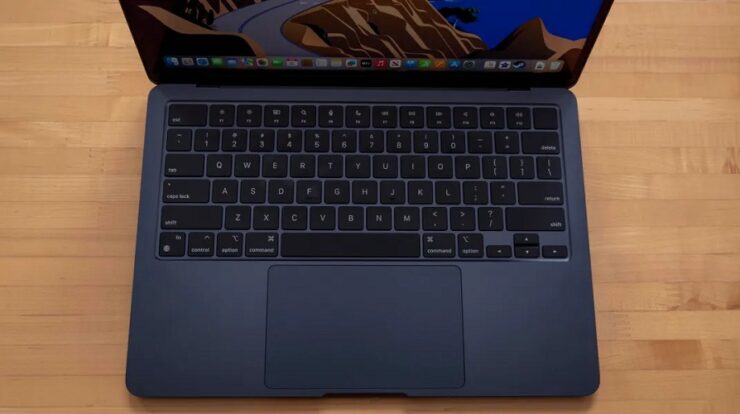
There are many ways to customize Mac computers to suit your individual preferences. You have the ability to modify the appearance and arrangement of elements, as well as adjust the behavior and settings of macOS. With countless customization options available, you can tailor your computer to showcase your distinct style. If you frequently use your computer, think about enhancing your Mac’s desktop for a more enjoyable experience. This article presents nine suggestions for customizing your Mac.
Choose A Wallpaper That Showcases Your Character
To customize your Mac, go to System Preferences and select Desktop & Screen Saver. Here, you can pick a suitable wallpaper for your desktop. If you’d like to change it, you can choose from the available options. For a more unique selection, create a folder for your images in the left sidebar. You can also browse your Photos library to select an image for your wallpaper. Pick a favorite photo and decide how long you want each image to be displayed, and from which album. This way, your device will have a fresh appearance every time you start it up. If you want to add a personal touch to your wallpaper, consider using a program like Photopea to design one that matches your style. Once you’re done, save your custom wallpaper to your computer and follow the earlier steps to set it as your background.
Choose From Light, Dark, Or Automatic Themes
Personalizing your Mac’s desktop is easy. Start by opening System Preferences and clicking on the “General” tab. At the top of the window, you’ll find three options for your desktop theme: light, dark, and auto. Choose the one you prefer. The default setting is a light theme, featuring a bright white background with dark text, while the dark theme presents a black background with white text. The auto option changes between the two themes based on the time of day. If you’re interested in something a bit different, there are numerous themes available online. To apply one, simply double-click the downloaded file, then go to System Preferences > “General” and select your desired “Appearance.”
Find A Good-Looking Dock
Begin by organizing your Mac’s dock for a more personalized experience. Remove any apps you don’t frequently use by dragging them away from the dock, where you’ll notice a Remove icon that appears—simply discard the icon. Next, you can include your favorite apps in the Applications folder by dragging them into the Dock. To find documents more easily, consider changing the colors of your Mac folders; you can look up instructions on how to do this online. If you want to customize the Dock, you can change its position, adjust the size of the icons, and set them to zoom when your mouse pointer hovers over them. To implement these changes, go to System Preferences and select the Menu Bar and Dock options.
Create A Custom Menu Bar
At the top of your display is the menu bar, which shows useful information like battery status, Bluetooth connection, Wi-Fi signal, and the date and time. On the left side, you’ll see specific functions that vary depending on the application you have open. To modify the settings for your menu bar, go to System Preferences > Dock & Menu Bar on the left. Scroll down to explore different options in the control center. To customize the clock, scroll to the bottom and select Clock, where you can adjust settings such as displaying Am/Pm or using a 24-hour format. Additionally, you can toggle between digital and analog time formats.
Set A Custom User Icon
When you turn on your Mac, you’ll notice a user icon. Personalize this icon by going to System Preferences (or System Settings) and selecting Users. Make sure your account is highlighted on the left. Then, click on your current user icon to modify it. You can choose from an animated emoji, a static emoji, a monogram with your initials, a photo from your webcam, an image from your library, or a suggested Apple image. To add an image from the web or one you created yourself, click and drag it into the circle located in the bottom left corner of the screen.
Change Trackpad & Keyboard Behaviors
If you are satisfied with the performance of your MacOS device’s keyboard and trackpad, you might choose to leave them unchanged. To modify their settings, go to System Preferences (or System Settings) and click on the Trackpad tab. Here, you can enable silent clicking (Tap to Click), change the trackpad sensitivity (Tracking Speed), adjust the haptic feedback (Click), or turn off the additional click force (Force Click). If you frequently type and use text selection shortcuts like Shift+Arrow keys, you might want to adjust your keyboard speed. To do this, navigate to System Preferences (or System Settings) > Keyboard, and then modify the Key Repeat and Delay Until Repeat settings. Increasing these settings can enhance your editing efficiency.
Establish A Custom Color Scheme
You can customize the colors of various elements on your Mac, such as buttons, boxes, menus, and selections. To adjust these colors, go to System Preferences > General and choose your preferred Accent and Highlight color. Once selected, your color choices will be reflected across system components. If your Mac has macOS Mojave or later, consider trying Dark Mode, which gives your dock, menu bar, app windows, and sidebars a stylish dark appearance. You can find this option in the same settings menu. If you want to customize your Mac further and can’t apply themes universally, exploring themes for specific apps is a good alternative. A notable example is the Alfred Mac control tool, especially when enhanced with the Powerpack, allowing you to easily change Alfred’s appearance using custom themes, as detailed on the Alfred Support site. Taking these steps can make your Mac feel more personalized and distinct.
Add Customs Sound To Mac
Think about customizing your audio settings to enhance your experience. You can alter the default system voice by going to System Preferences, then to Spoken Content, Accessibility, and finally System Voice. Additionally, you can change your alert sound in the Sound Effects section or within System Preferences. There are numerous options available to select from.
Also, Check:
- GIF Maker Apps For Android
- PS2 Emulators
- Private Search Engines
- Prank Websites
- Fast Charging Apps For Android
Conclusion:
By making a few simple adjustments, you can enhance your Mac experience and tailor it to your needs. Investing some time to customize the mac device according to your preferences can significantly improve your enjoyment. After personalizing it, think about simplifying your daily tasks on your Mac. With just a few easy modifications, you can improve its functionality and make it even more user-friendly.

